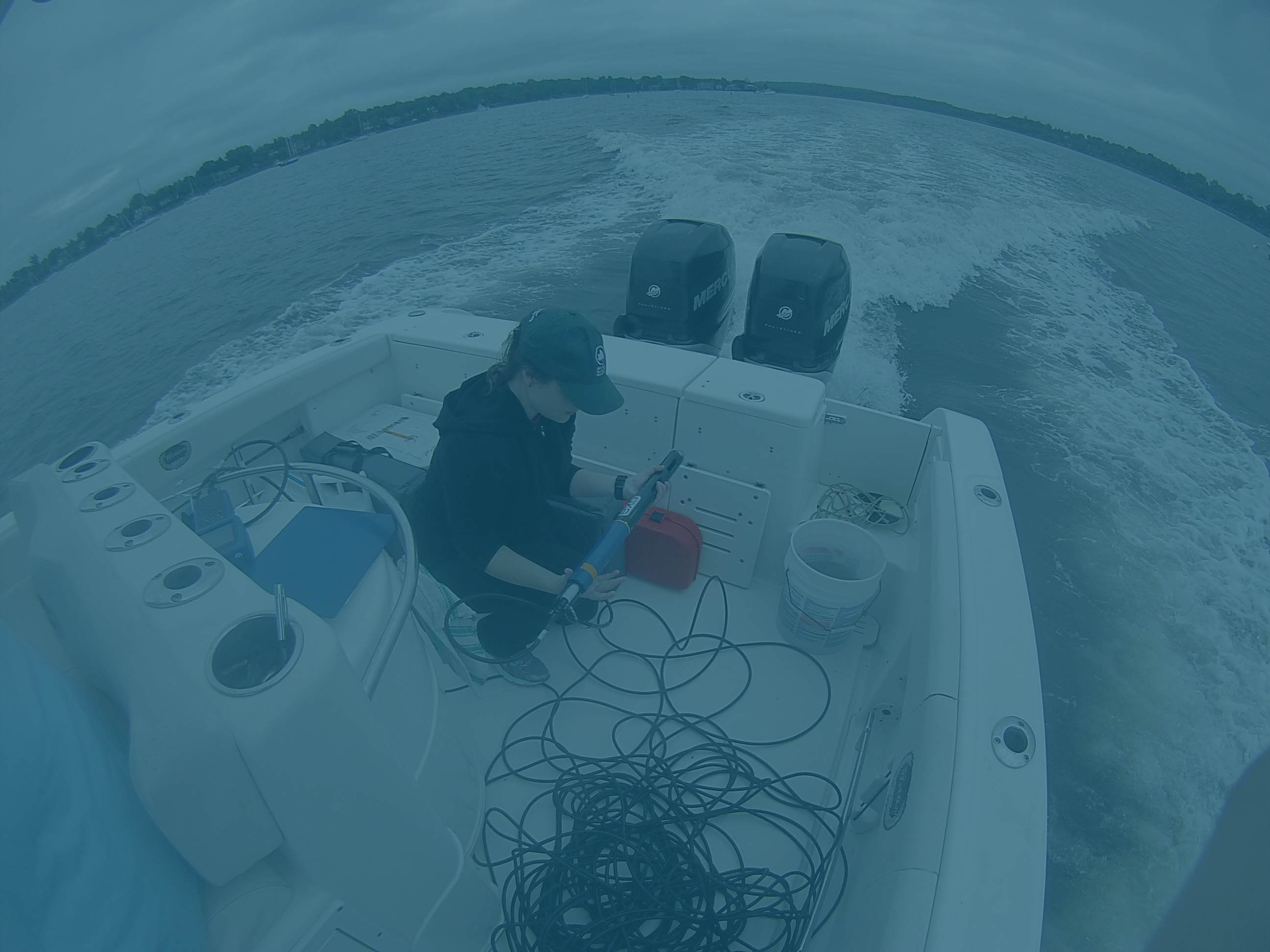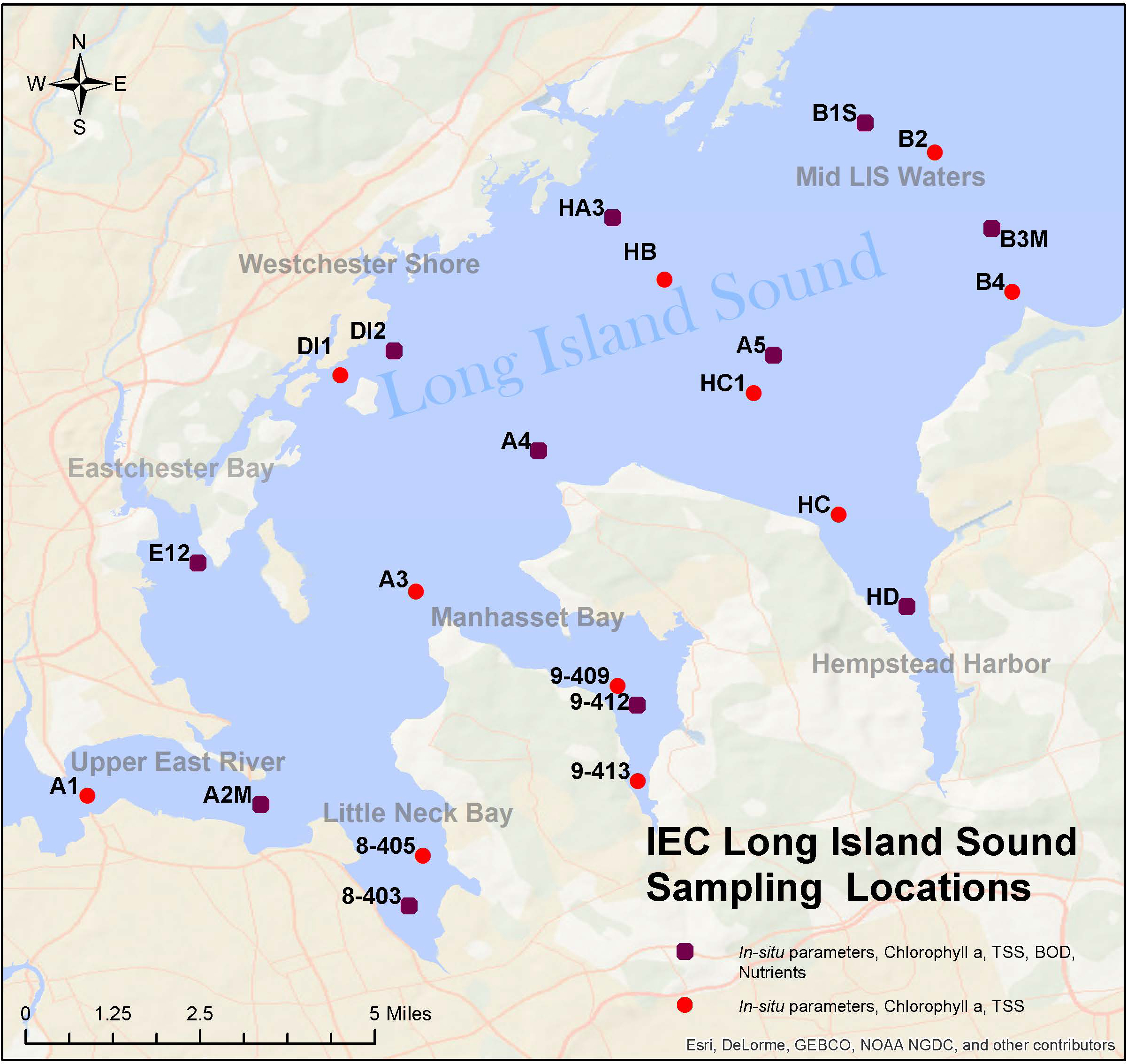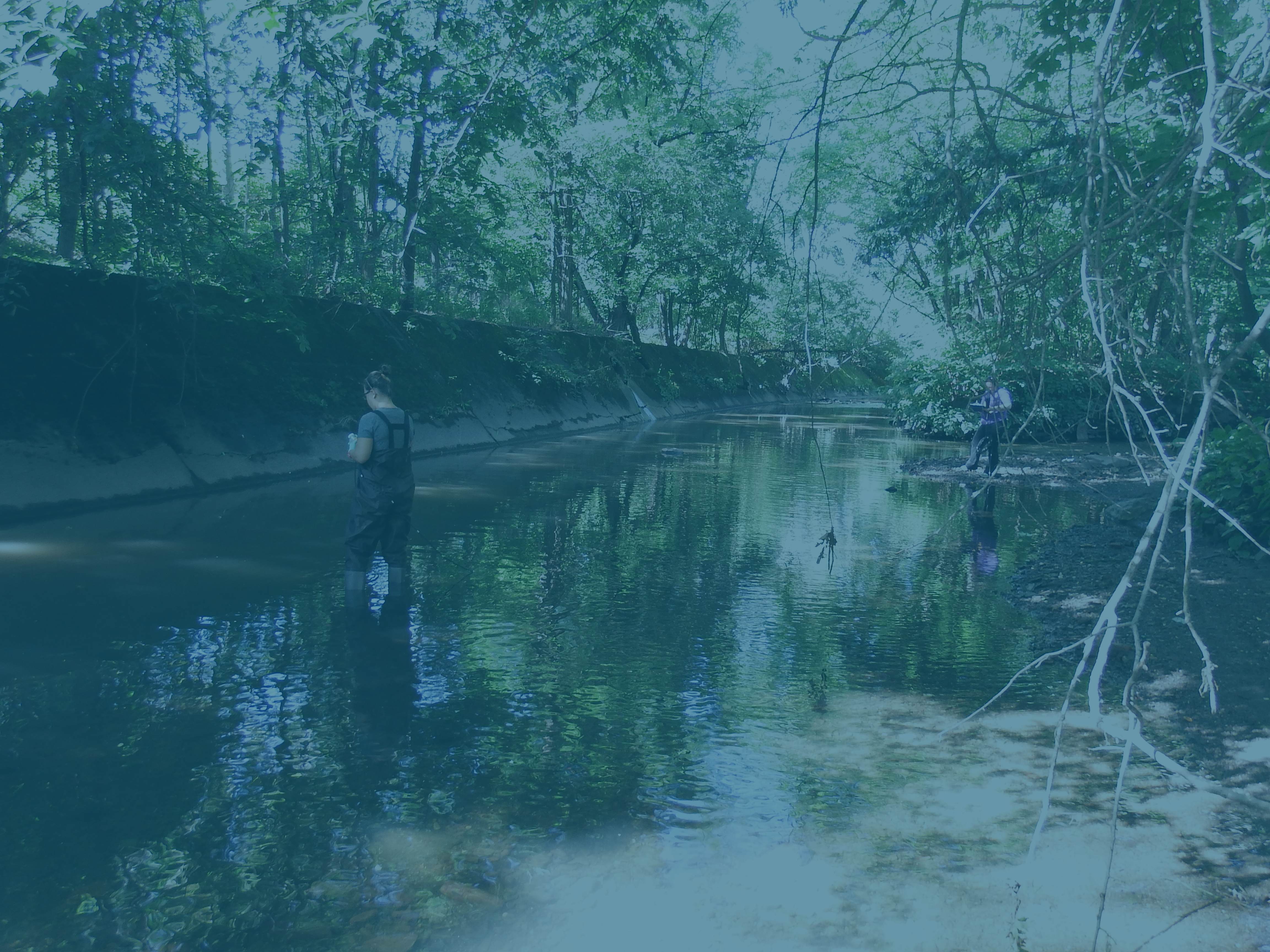
Western Long Island Sound Monitoring Program
With high population density, extensive coastal development and insufficient tidal flushing, the far western Long Island Sound (also known as the Narrows) is highly susceptible to degradation from pathogen and nutrient inputs due to stormwater runoff, combined sewer overflows, leaking septic systems and aging sewage infrastructure. The Long Island Sound Study Comprehensive Conservation and Management Plan (LISS CCMP 2015) identifies the Western and Narrows basins as the most stressed region of Long Island Sound.
2016 Long Island Sound Report Card gave this western-most region of the Sound a grade of "F" (see figure). In response to the increasingly critical need to document summer hypoxic conditions in western Long Island Sound and its embayments, IEC has monitored dissolved oxygen, as well as key water quality parameters relevant to hypoxia, in far western Long Island Sound every summer since 1991.

IEC’s historical 22 monitoring stations include both open water and embayment stations and cover a geographic area between the Bronx-Whitestone Bridge to the west, and runs east to a line running from approximately Rye, New York, on the Westchester County shoreline to Glen Cove, New York, on the Nassau County shoreline.
During each survey, IEC monitors the following in situ parameters weekly at all 22 stations: dissolved oxygen, water temperature, salinity, pH, and Secchi disk depth. Historically, monitoring has occurred during summer months (late June-mid-September) to identify hypoxic conditions and detect temporal and spatial changes in the western Sound’s open waters and embayments. In addition to in situmonitoring, sample collection surveys are conducted on a biweekly basis during which chlorophyll a and Total Suspended Solids (TSS) are collected at all 22 stations and nutrients and Biochemical Oxygen Demand (BOD) are collected at 11 stations. In consultation with the LISS Management Committee and the LIS Water Quality Monitoring Workgroup (WQMWG), IEC has expanded the scope of monitoring in recent years to align its monitoring program with that performed by the Connecticut Department of Energy and Environmental Protection (CTDEEP), thereby enabling a more comprehensive assessment of both the extent of hypoxia and the assessment of water quality parameters relevant to hypoxia throughout Long Island Sound.
Beaucoup d'entre nous ont l'impression que les paris sportifs en ligne peuvent être considérés comme un parallèle du poker, mais il n'y a vraiment aucune comparaison possible: https://casinoscad.com/quebec-casinos/ . Si vous souhaitez savoir s'il s'agit d'un sport ou d'un jeu d'argent, jetez un coup d'œil à cette discussion sur le water-polo et le poker en ligne. En fait, les paris sportifs et le poker en ligne n'ont rien à voir l'un avec l'autre car les deux sont très différents. Les paris sportifs en ligne et le poker en ligne sont souvent considérés comme similaires par de nombreux individus et fans, mais ils sont totalement différents. Allons plus loin. Les paris sportifs en ligne ou les jeux d'argent en ligne se déroulent sur Internet. Certaines personnes ont assimilé ces deux activités comme étant synonymes l'une de l'autre. Ce n'est pas du tout le cas. La différence entre les deux est très claire. Les paris sportifs ont lieu dans un lieu spécifique, alors que les jeux d'argent en ligne ont lieu sur le World Wide Web, ce qui signifie qu'ils se déroulent dans le monde entier. D'autre part, le water-polo en ligne est un jeu en ligne qui se joue entre des groupes de personnes ayant des intérêts similaires. Certaines de ces personnes participeront et d'autres regarderont l'action, mais elles ne seront jamais physiquement présentes au même endroit. Ce qui rend ce sport aquatique si agréable, c'est que contrairement à d'autres jeux comme le golf, le baseball ou le football, ce jeu ne peut pas être gagné simplement en ayant le meilleur score dans un certain nombre de tours.
In 2018, with support from EPA Region 1’s Long Island Sound Office, IEC is planning to further expand this coordinated long-term monitoring program. IEC plans to expand its western Long Island Sound monitoring program year-round by adding eight monthly runs from October 2018 through May 2019. Year-round monitoring in the far western Long Island Sound will result in a comprehensive, coordinated, Sound-wide water quality monitoring program.
The monitoring is performed according to an EPA-approved Quality Assurance Project Plan.
Data produced from IEC’s WLIS monitoring provide information to assess progress under the 2000 TMDL for dissolved oxygen and inform the EPA’s Nitrogen Reduction Strategy and NYSDEC’s Long Island Nitrogen Action Plan (LINAP). These data help assess how the ecosystem is responding to reduced nutrient loading resulting from recent WWTP upgrades in New York and Connecticut. Additionally, these data will enable the assessment of the efficacy of various long-term control plans (LTCPs) aimed at improving water quality in the embayments and near-shore waters in western Long Island Sound.
Click here to download IEC’s historical Western Long Island Sound Water Quality database onto your device.You will need Microsoft Access or a compatible software to access the database.
By collaborating with CTDEEP, the WGMWG and other Long Island Sound stakeholders, IEC and CTDEEP have produced joint season summaries in 2016 and 2017. IEC will continue to work with LISS partners, specifically the LISS WQMWG and CTDEEP, to implement an efficient, coordinated monitoring program which complements the monitoring of other agencies by filling key spatial and temporal sampling gaps while minimizing any unnecessary overlap.

